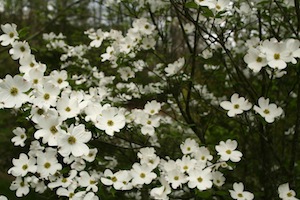Landscaping for Birds & Butterflies
Designing a landscape for your outdoor spaces should first and foremost have your personal tastes and needs in mind, but it's important to remember that you'll be sharing these spaces with the animals that call it home. There are many types of flowering plants that are not only beautiful, but also provide nutrition to birds and butterflies that are just as beautiful.
Attracting Butterflies & Butterflies
Gardening and landscaping in a way that attracts birds, butterflies, and other forms of wildlife is a richly rewarding experience; by sharing your outdoor space with wildlife, you become a part of nature itself, not just an observer.
There are plants that provide food and nutrition to these animals in a number of ways: the nectar of the flower itself, the dying seed heads of spent flowers, as well as the variety of insects that live in and around the plants. By growing these types of plants, you'll soon be enjoying the gentle flutter of butterfly wings and the happy singing of the songbirds.
Plants that Butterflies Love!
There are a number of plants that attract butterflies; here is a list of some of the most popular chosen not only because butterflies love them, but because they are attractive additions to landscaped areas.
Butterfly-attracting plants include:
- Daffodils: A spring bulb flower (pictured above)
- Candytuft: A late spring blooming perennial(pictured at left)
- Allium Schubertii: An ornamental spring-blooming onion bulb.
- Candy Oh! Landscape Roses: An easy-to-grow rose flower that butterflies love!
- Red Hot Poker Plants: A beautiful spiky flower irresistible to butterflies.
- Butterfly Bush: An obviously-named plant. Look for non-invasive version Buddleia.
- Chocolate Drop Sedum: Grows in nice contrast with the Red Hot Poker plants.
- Maltese Cross: This classic garden plant is a vibrant summer-blooming standout.
- Butterfly Weed: Another obviously-named plant, it's a relative of the common milkweed.
- Milkweed Milkweed Milkweed for Monarchs: The beautiful monarch butterfly is in steep decline. The only plant they eat is milkweed, which most people consider a weed. Planting and encouraging milkweed plants in your landscaping provides food and habitat for this important butterfly! Learn more about how to obtain seeds for this important plant HERE.
Welcoming Birds to Your Landscape
There are many ways to make your outdoor spaces attractive to a wide variety of birds, from hummingbirds to colorful songbirds.
Flowering Trees and Shrubs
Flowering trees and shrubs make spring amazing with their explosion of flowering colors. The beautiful, fragrant flowering trees are welcome sights for birds as well.
Among the most popular bird-attracting flowering trees is the dogwood, pictured at left. There are numerous types of trees and shrubs that birds love to visit, including :
'Donald Wyman' crabapple, Japanese dogwood, magnolias,sunrise forsythias, eastern redbud, variegated weigela, pussy willows, and redspire callery pear.
Flowers to Attract Hummingbirds
The tiny, mysterious hummingbird is a prized specimen for birdwatchers. Typically attracted to hummingbird feeders, they also love a variety of flowering plants, and the sweet nectar they provide. Plants that hummingbirds prefer are also typically very brightly colored; a variety of them will make your landscape the talk of the neighborhood.
Red-colored flowers are widely-known to be very attractive to hummingbirds. Types of red flowering plants include: hibiscus, mums, red peonies, geraniums, tulips, red azaleas,poppies, red salvia, and red coleus.
Flowers of other colors will also bring hummingbirds around. Purple, white, pink, blue, and orange flowers all contain high levels of nectar, which is the candy that hummingbirds are after.
Hummingbirds aren't attracted to colorful flowers alone; annuals and perennials, vines, shrubs, trees, bedding plants and hanging plants all attract these tiny little visitors. By choosing a variety of plants according to color and blooming period, you'll have a landscape attractive to man and bird alike.
Here is a list of flowers, bushes, and vine plants that attract hummingbirds:
Bee balm, red columbine, delphinium, hollyhock, butterfly bush (non-invasive species), catawba rhododendron, trumpet vine, cardinal vine, and verbena bushes.
comments powered by Disqus






































































